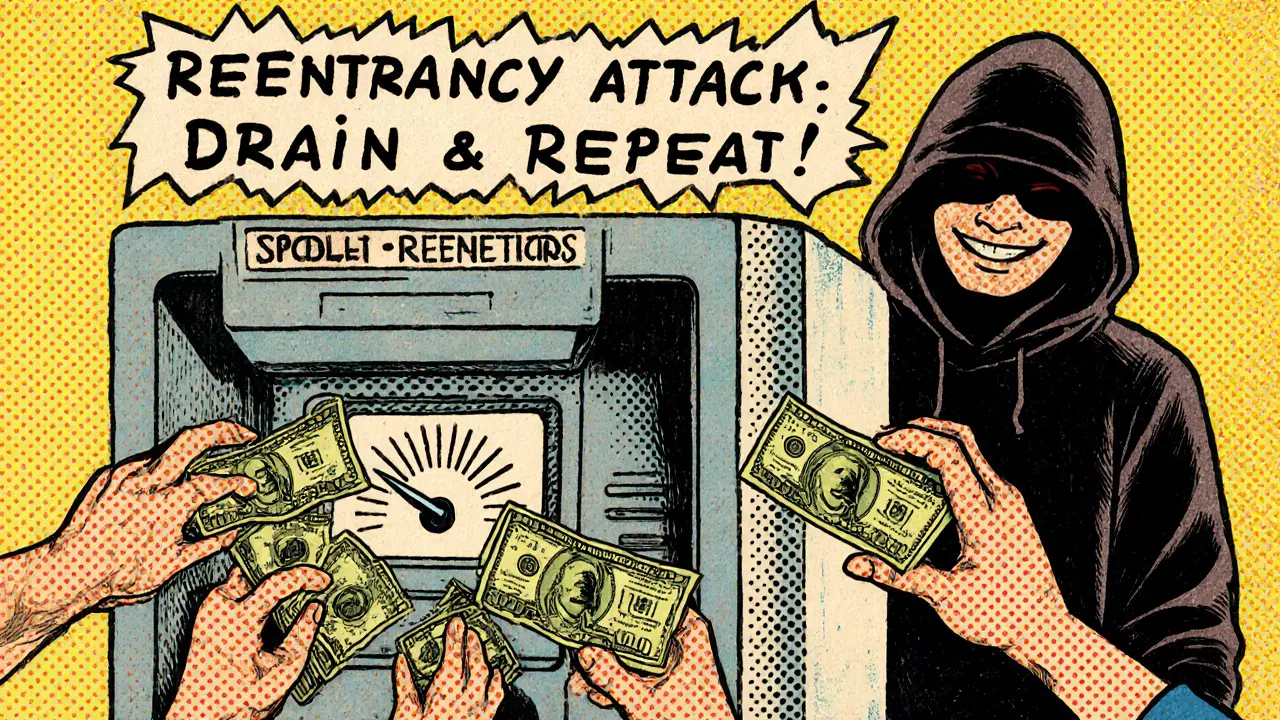Reentrancy Attack: How Smart Contracts Get Hacked and How to Stay Safe
When a reentrancy attack, a type of exploit where a malicious contract calls back into a vulnerable contract before the first transaction finishes. It’s one of the oldest and most dangerous flaws in smart contract code. Think of it like a bank teller giving you cash, but before they update your balance, you sneak back in and ask for more — again and again — until the vault is empty. This isn’t fiction. In 2016, the DAO lost $60 million because of this exact flaw. And it’s still happening today, even on top DeFi platforms.
Smart contracts are supposed to be self-executing and trustless, but they’re only as safe as the code written for them. A smart contract vulnerability, a flaw in blockchain-based code that allows attackers to manipulate outcomes or steal funds like reentrancy happens when a contract sends funds and then updates its state — in the wrong order. If an attacker’s contract can interrupt that process and call back in, it can drain funds before the original transaction completes. This is why the Ethereum hacks, high-profile thefts on the Ethereum network often tied to poorly audited smart contracts keep happening. The same bug that broke the DAO is still found in new projects because developers skip basic checks or rely on outdated patterns.
Fixing this isn’t hard — it’s just often ignored. Use the check-effects-interactions pattern: verify conditions first, update state next, then send funds. Simple. Or use OpenZeppelin’s built-in ReentrancyGuard. Many of the posts below show real cases where this went wrong — like the CoinRui and BITCOINBING exchanges that lost user funds due to similar code flaws. You’ll also find guides on how to audit contracts, spot risky DeFi protocols, and protect your wallet from these hidden traps. These aren’t theoretical risks. They’re live threats that happen every month. If you’re using DeFi, staking, or trading on any platform that runs on smart contracts, you need to understand this. The good news? Once you know how it works, you can avoid it. Below, you’ll find real reviews, breakdowns, and lessons from past attacks — so you don’t become the next statistic.
Common Smart Contract Vulnerabilities and How They Cost Millions
by Johnathan DeCovic Oct 28 2025 22 CryptocurrencySmart contract vulnerabilities have cost over $1.1 billion since 2016. Learn the top risks-reentrancy, access control, oracle manipulation-and how to prevent them before your project gets hacked.
READ MORE
